Who knew that a thrift shop could be so lucrative? ThredUp, which dubs itself the world’s largest consignment store, just went public, raising $168 million, with shares jumping 43% in its first day of trading.
ThredUp’s business model depends on selling large quantities of low-priced used clothing and giving sellers a commission. By making pennies on each sale, the company racked up $128 million in profits in 2020, selling nearly four million garments—all while much of the fashion industry was pummeled by the pandemic. ThredUp’s IPO registration paperwork offers new insight into what has made consignment a nine-figure business: It all comes down to ThredUp’s complex, custom-designed warehouses, which use machinery and algorithms to automate almost every part of its logistics.
2021 is shaping up to be a big year for resale businesses. In January, Poshmark, an app that connects buyers with sellers, also had a successful IPO. Wall Street appears to recognize that these low-margin businesses can still be profitable. But over the long term, ThredUp faces challenges: stiff competition comes from many other players popping up on the market, and brands such as Patagonia are launching resale marketplaces of their own products.
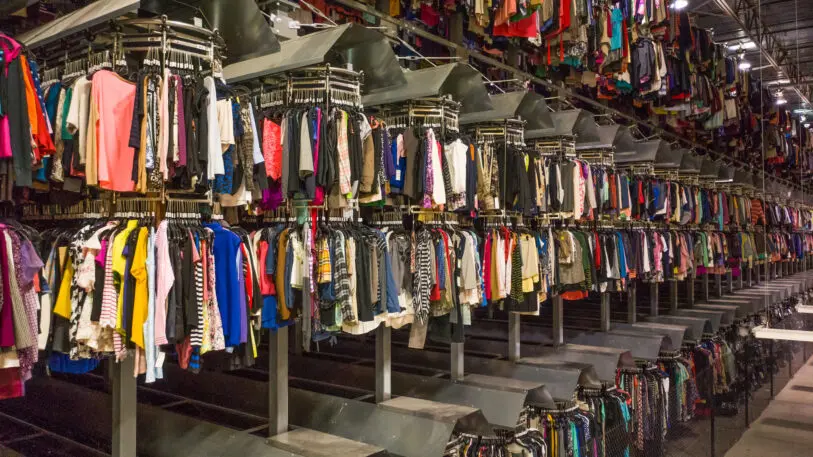
From Z-racks to futuristic warehouses
CEO James Reinhart launched ThredUp in 2009 right after graduating with a joint degree in business and public policy from Harvard. Previously he had worked in nonprofits and education. He launched ThredUp to make it easier for people to buy and sell used clothing, which he believed would reduce the fashion industry’s massive waste problem.
Twelve years on, the company operates distribution centers in three locations—including one in Atlanta that is the size of three football fields. These warehouses can hold 5.5 million items. And every day, the company processes more than 100,000 products and uploads them to the brand’s marketplace.
When Reinhart had the idea of ThredUp, platforms such as eBay existed for selling secondhand goods, but the process was laborious for the seller, requiring them to photograph, price, and mail products out. Reinhart’s idea was to send people prepaid “clean out bags” that they could pack with old clothes and send to ThredUp. ThredUp would then take care of the selling process. If items sold, sellers would get a payout, which they could receive in cash or shopping credit.
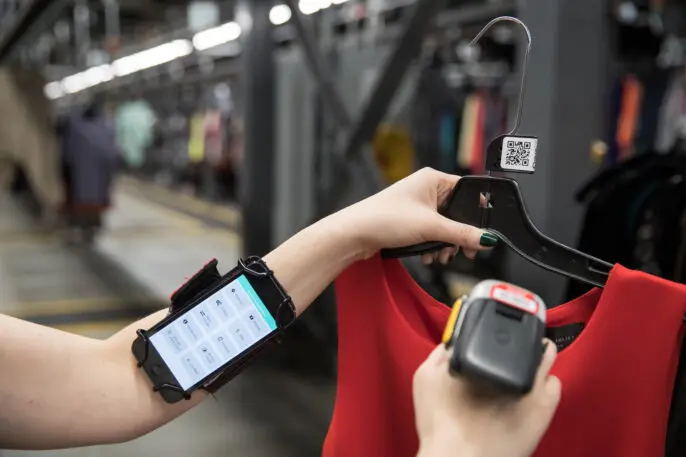
In 2012, Reinhart hired John Voris and Andy Rendich, who led Netflix’s engineering and operations, to help build software and hardware to process millions of garments a day. Until now, ThredUp has guarded much of this process as a secret, but the company disclosed many new details in its IPO registration paperwork. “We’ve built something that most people thought couldn’t be built,” Reinhart says.
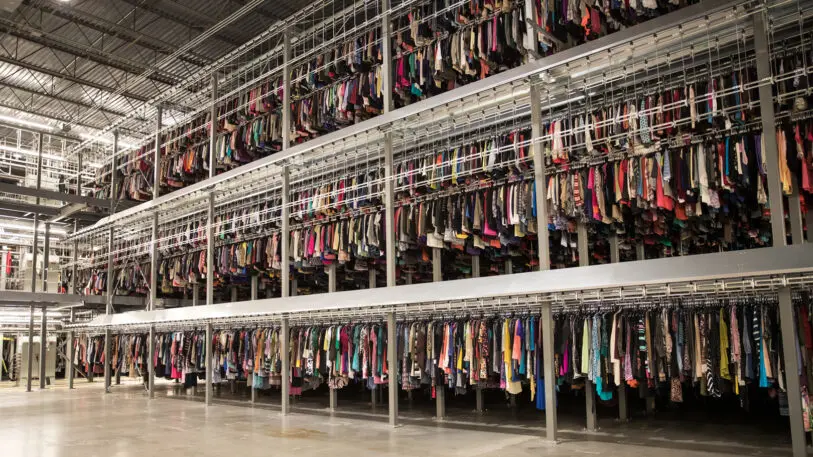
Reinhart points out that ThredUp has access to millions of data points, since it has tracked every single item that customers have sent in. The pricing department also studies the prices of popular objects at common brands to better make sense of how much to charge for items on the site. The goal is to sell products as quickly as possible, so they don’t take up valuable space in the warehouse. Items that don’t sell within a few months are either donated or recycled.
Reinhart also built custom machinery to physically process all of the clothes. Each unique item has to be identifiable and easy to access when a customer buys. But unlike food products, clothes don’t come embedded with bar codes, so the company has had to develop its own system for keeping track of each item. The company has not disclosed exactly how it does this, but the IPO registration offers a glimpse into the extent of the operation. “Every item processed is unique, came from or belongs to an individual seller and is individually tracked using its own stock keeping unit, or SKU,” it reads.
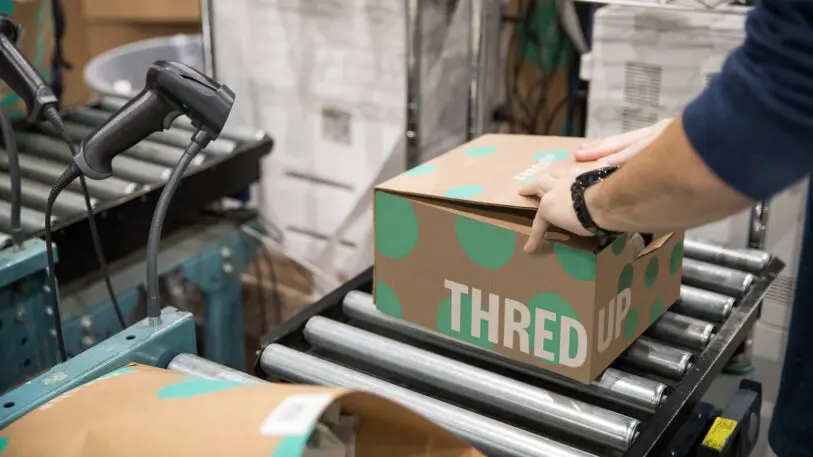
“Resale is nothing new,” says Kristen Classi-Zummo, director of apparel analysis at NPD. “But platforms like ThredUp changed the resale game by making it more accessible to both buyers and sellers. And it’s directly related to the upward trajectory of the resale industry.”
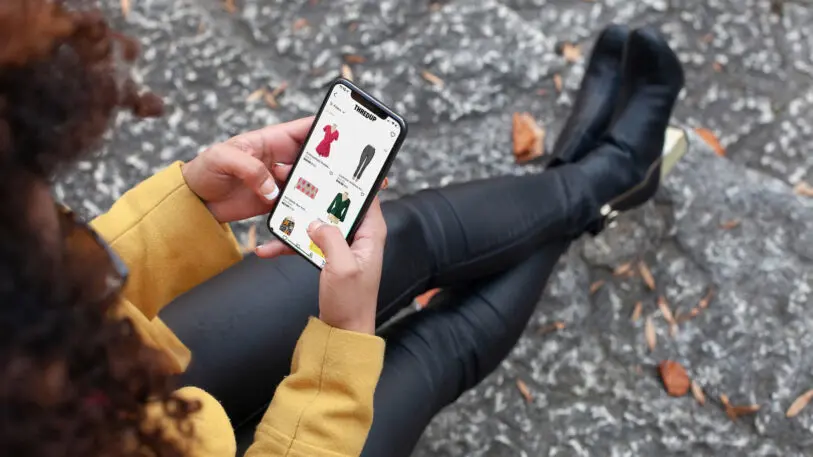
Saving the Planet
While ThredUp’s infrastructure has allowed it to process vast quantities of used clothes and turn a profit doing so, the profitability of the business model wasn’t immediately obvious. Building all of the custom hardware and software took a lot of time and money early on, when it still wasn’t clear exactly how much demand there was for used clothing.
Reinhart hopes that ThredUp can help cut down on the enormous waste the fashion industry produces. Since 2000, the amount of time consumers wear garments before throwing them away has fallen by 40%, and once garments are discarded, 73% will be burned or landfilled. By making it easy for sellers to part with clothes they no longer wear, Reinhart believes ThredUp allows them to stay on the market longer. And by making it easy for consumers to buy used garments, they may buy fewer new clothes.
According to Classi-Zummo’s research, consumers also believe that buying secondhand is more sustainable. ThredUp “has helped to change the purchase motivators around buying secondhand,” she says. “In the past, consumers turned to resale for that rare vintage find or a diamond in the rough. But our data shows that consumers now make these purchases because they believe it is more sustainable than buying new.”
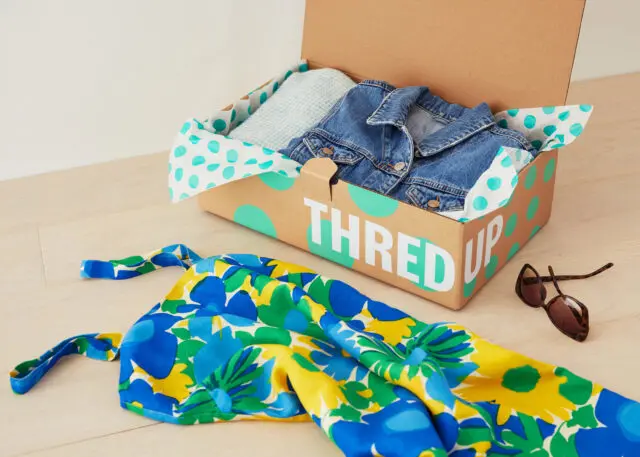
Sarah Kent, Business of Fashion‘s sustainability lead, asks whether secondhand sites might encourage even more consumption: “By offering a ready market for unwanted items, re-commerce risks fueling the current culture of binge shopping.” Classi-Zummo believes that the resale industry may also be changing what people buy. “We’ve seen consumers increasingly prioritizing quality and durability when they buy a product,” she says. “Part of this is because they want to be able to resell it when they’re done with it.”
So what’s next for ThredUp? Reinhart says the company will use the influx of cash from the IPO to keep building warehouses. Eventually, it will work toward expanding internationally. The company is also making its technology available to other fashion retailers so they can offer resale services to their own customers. It is already offering a white-label version of its service to Walmart, Reformation, Madewell, and Gap, and it hopes to add more brands to this list.
Ultimately, Classi-Zummo believes that the resale sector is still in its infancy, and the industry is poised to continue growing as more technologies emerge. For instance, the blockchain could be a game-changer for the industry, since it can help identify and authenticate items on the secondhand market.
From Reinhart’s perspective, there’s still plenty of room to grow. ThredUp currently has 1.24 million active buyers and 428,000 active sellers, which is a tiny fraction of the U.S. population. “The IPO sends a clear message that resale, and consumers’ desire for more sustainable options, is here to stay,” says Reinhart.
Recognize your brand’s excellence by applying to this year’s Brands That Matter Awards before the early-rate deadline, May 3.
